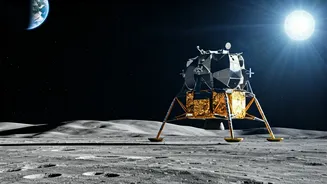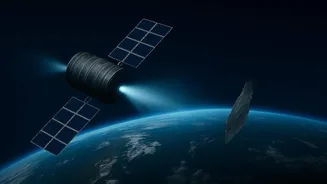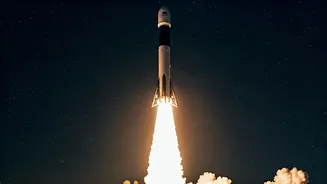Artemis: A New Era
The Artemis program, spearheaded by NASA, signifies a paradigm shift in space exploration, moving beyond brief visits to establishing a sustained human
presence on the Moon. Artemis seeks to leverage the Moon as a stepping stone, using it as a testing ground for technologies and strategies crucial for future Mars missions. Astronauts are actively training, simulating lunar environments to prepare for the challenges of long-duration space travel. This involves practicing moon landings, utilizing advanced rovers, and honing skills essential for survival and scientific exploration on the lunar surface. Artemis isn't merely about planting a flag; it's about building infrastructure and understanding the Moon's resources, thus paving the way for further exploration.
Training and Preparation
Central to the Artemis program is the comprehensive training regimen for astronauts. Simulated lunar environments, often replicated in locations like Colorado, provide realistic practice for moon landings and surface exploration. Astronauts engage in activities such as photographing the lunar surface and practicing the use of rovers to navigate the Moon's terrain. These exercises are critical for familiarizing the astronauts with the operational challenges and ensuring they are adequately equipped to handle the unforeseen situations that may arise during actual missions. The focus extends beyond technical proficiency to include the psychological and physical endurance required for extended stays in space. Moreover, the training incorporates collaborative efforts with international partners, contributing to the global nature of the Artemis endeavor.
Lunar Lander Development
The development of advanced lunar landers is a crucial component of the Artemis program. These landers are designed to be autonomous and versatile, capable of transporting astronauts and equipment to and from the lunar surface. The European Space Agency (ESA) is significantly involved, with its lunar lander undergoing extensive simulations to ensure operational readiness. These simulations evaluate the lander's performance in varied lunar conditions and assess its capabilities. The goal is to create reliable, reusable landers that facilitate regular lunar missions. The development also involves the consideration of incorporating cutting-edge technologies that improve efficiency and expand the capabilities of lunar expeditions. The landers will contribute to establishing a sustained presence on the Moon, enabling extensive research and exploration.
Moon's Resource Utilization
Beyond scientific exploration, the Artemis program considers the possibility of utilizing the Moon's resources. Helium-3, a potential fuel source, has attracted attention, and there are discussions about the potential of mining on the Moon. This endeavor could reduce dependency on Earth-based resources and support the long-term sustainability of lunar bases. It's a complex undertaking that requires careful assessment of ethical, environmental, and technological factors. The process involves identifying and extracting resources and developing the infrastructure needed to process and utilize them effectively. The utilization of lunar resources is expected to create a new space economy and make lunar missions more cost-effective. These activities are critical for achieving long-term lunar missions and establishing the self-sufficiency needed for extended stays.
Mars: The Ultimate Goal
The Artemis program's ultimate aim extends beyond the Moon, setting the stage for human missions to Mars. The experiences, technologies, and infrastructure developed during the lunar missions are to be directly applied to future Mars expeditions. The Moon serves as a testing ground, allowing engineers to evaluate equipment, refine strategies, and address challenges associated with deep-space travel. Mars missions will necessitate even greater self-sufficiency and resourcefulness. The goal is to build the foundation for sustained human presence on Mars, thus expanding the reach of humanity in the solar system. The knowledge and expertise gained on the Moon are instrumental in achieving this ambitious goal, helping to overcome the challenges associated with traveling to and surviving on another planet.












